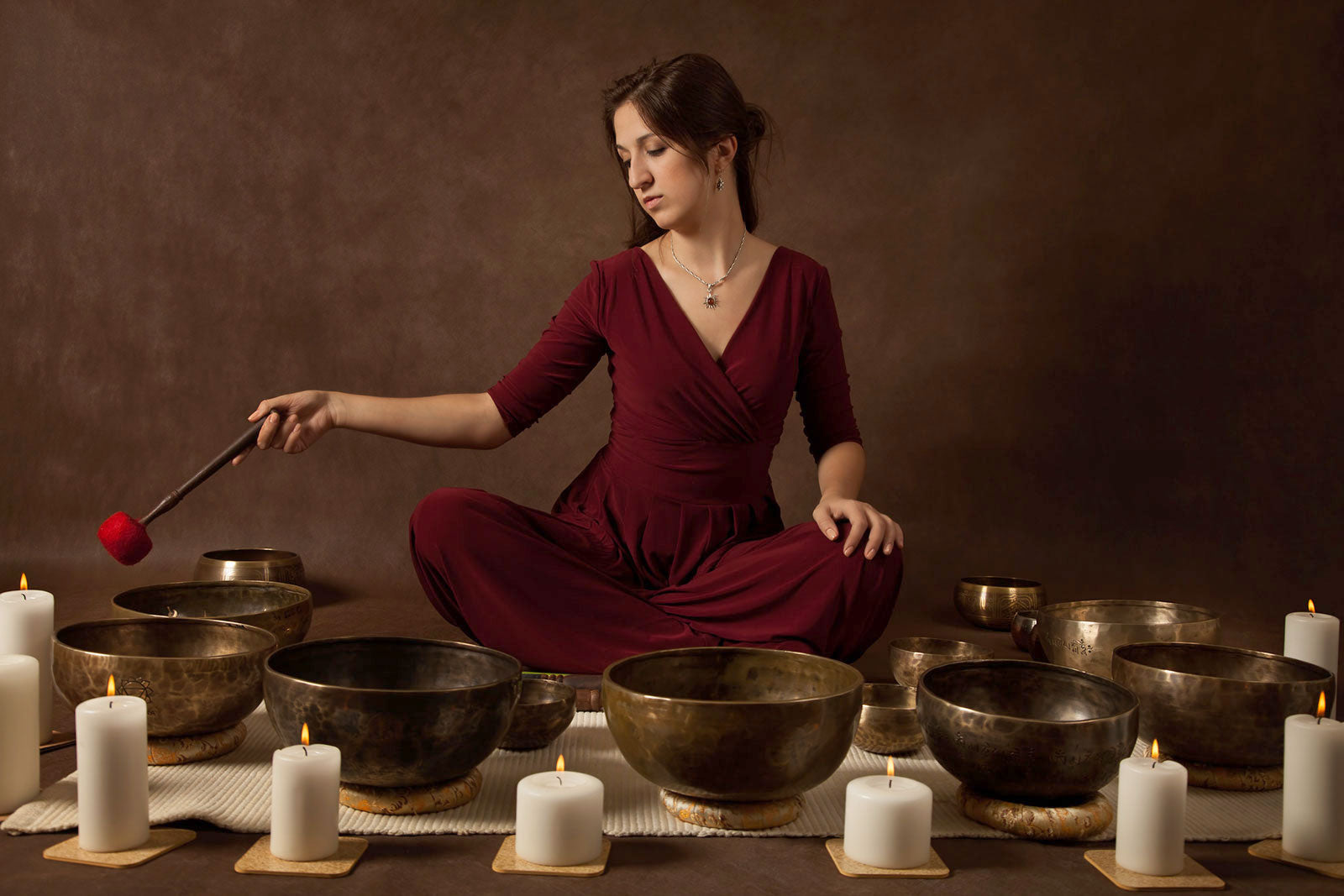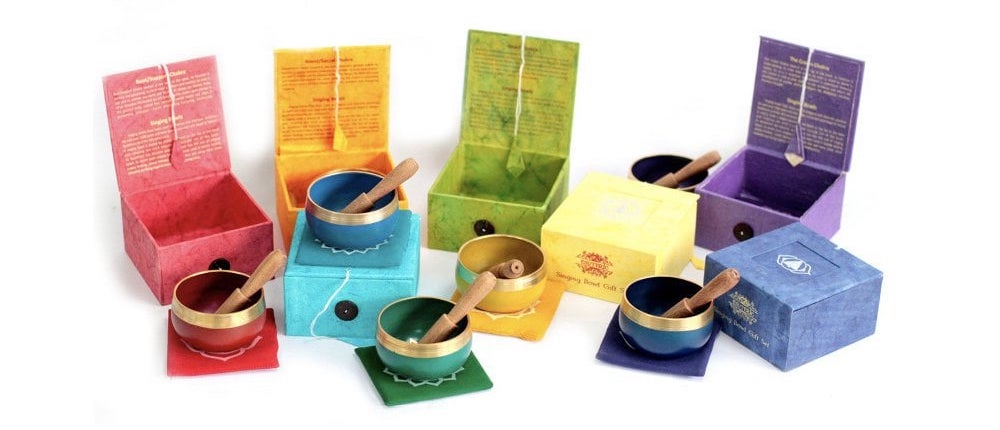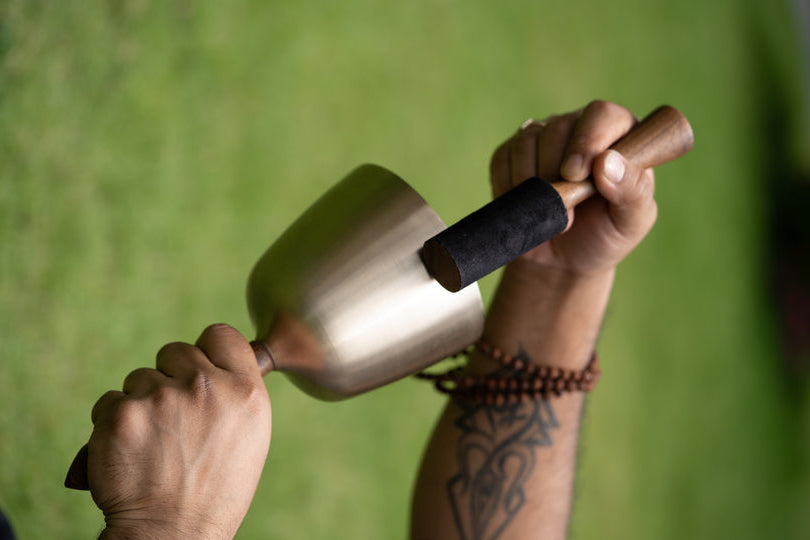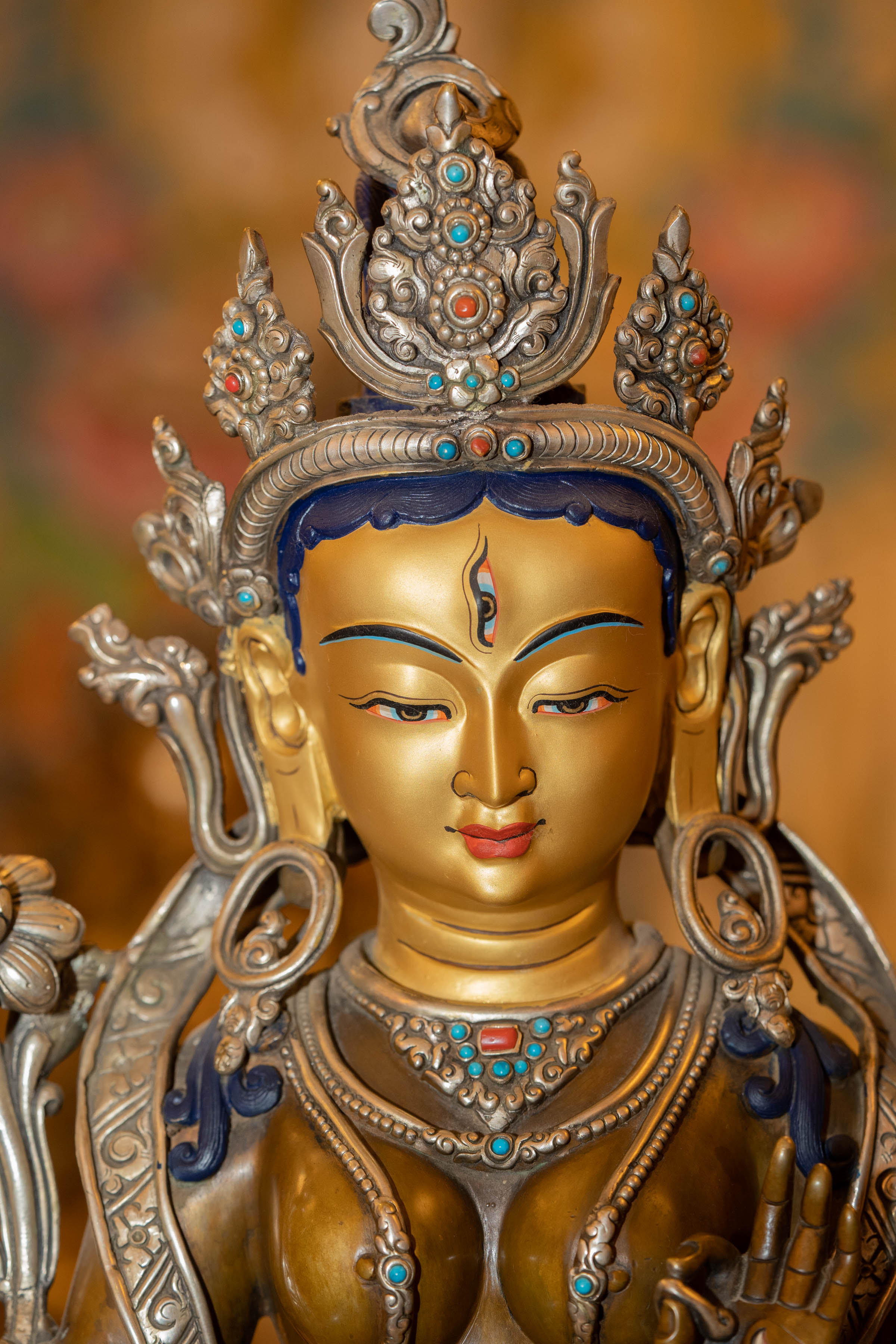If you dive right into selection of singing bowls for sale please take advantage of all the filtering and sorting tools. They are designed to allow you to narrow or widen your focus. Don’t get fooled by all the pictures being about the same size – a big singing bowl can be 10X the size and weight of a tiny. The compare feature lets gather groups of singing bowls and play them together. High quality sound clips are very good at conveying the full range of sounds in each singing bowl. You can be confident the Tibetan singing bowl will sound exactly the way you hear it.
Each bowl has a second sound. That second is with a ringing stick, teasing out individual tones. Surprised how some of have been able to use the sound to discern that a bowl has a special resonance with another sets.
Maybe you don’t want to do the deep dive into dozens of singing bowls when you specials take care of the selection.
Maybe you’ve looked and aren’t sure or haven’t found exactly the right bowl. Please have great success matching bowls. Check out some of the from
All kinds tuning into their healing capabilities and learning how to use Tibetan bowls these days. I routinely get these two questions: “How do I choose a good bowl” and “How do I know which bowl is good for a specific chakra.” People also call to obtain a bowl with a certain musical note. Choosing a good bowl requires paying attention and feeling to it.
Lucky Thanka is one of the best Singing Bowl Wholesaler from Nepal. All our Singing bowls comes directly from the artist of Nepal. Purely hand beaten and crafted with great care.
Quality
Get educated about the look and sound of a good Tibetan bowl by learning knowledge. It takes a trained eye and ears. There are several signs in a bowl including its shape, markings inside and out, thickness of the metal, especially on the bottom and the tone. Also, not all bowls are good bowls. Tone, vibration, harmonics, awaken-ness, warmth and longevity of sound all come into play. Bowls were made in a variety of regions and their shape and markings are telling. Some of the bowls have consciousness transformation as their primary intention, and some have physical healing. This can be determined by their shape.
In Asia, a good and trustworthy best bowls.
Usage
Determine what you will use the bowl for: meditation, grounding, and physical healing. Do you want to integrate a few bowls into an existent modality, use them with other instruments in a musical vein or become a sound healer? Do you wish to use them in yoga classes for relaxation at the end? Are you a nurse and want to use them with patients during your rounds? Is this a way for you to call meetings to order in the corporate setting? The answers to these questions will impact your choices. It’s a good idea to know what you will use them for before you purchase. Collecting bowls is also an organic process. If you obtain one good quality bowl and take the time to play it until you know its many possible voices and tones, obtaining others are a matter of choosing those that harmonize easily with the first one in the context used. There are many types of mallets—wood, suede-covered, felt-covered—and each is available in fat or thin, heavy and light versions. Each mallet will produce a different sound from the bowl when properly used. Remember that both the bowls and the mallets need “breaking in time” and that can only happen with playing them. The more you play, the richer the sounds you will hear. Just like any other instrument, the bowls respond differently when the metals are warmed up. As the mallets develop grooves and texture they will also produce richer texture of sound from the bowls.

Tone
A bowl should hold its vibration and linger for some time when struck, producing several layers of tones, overlaying harmonics and overtones. If the vibration and the volume of a bowl flutter away quickly, it’s not of high quality. Equally, if it has a singular tone or sounds tinny, it’s also of substandard quality. Always strike a bowl with the padded portion of a stick rather than wood or suede to produce a soft expansive sound.
When you “sing” a bowl (rub the rim with the wooden or leather part of a stick) there are several things to consider. How “awake” the bowl is: some bowls sing right away, and some need to be played for a while and “broken back in.” This is neither good nor bad, but it’s important to know so you don’t dismiss a potentially great instrument just because it doesn’t sing right away. Remember also that you can never “get” a bowl to sing; you can only invite the sound and wait for it attends. When you hear a bowl, listen to your body. If it opens your heart, or moves you deeply in some manner; if you feel tingling all over, or the tone directly impacts one area of your body or grounds you, these are all good signs. Bowls were created for consciousness transformation and healing. You should feel their effect on you.
If you have more than one bowl then it is good to play them together so that their tones harmonize. Eventually, they will anyway, because that is their nature and magic. But why not help the process by starting with bowls that sound great together right away? Note that with several bowls, playing them in one pattern may sound very good and in another pattern may not!
Aesthetics
How a bowl looks is part of the selection process. Its size, shape and personality should attract you. Since there are many types of bowls, each with its own history and shape, it’s a good idea to spend some time just looking to see if there is one that attracts you more than the others. When you place it in your hand it should feel wonderful, as if it belongs there. It should not be too heavy for you or too small for the size of your hands. There are some bowls that have deep hammer marks and some that have a shiny patina. Some have Sanskrit mantras and others have symbols inscribed on them. All of these things should be taken into consideration when you seek a bowl.
Bowls and chakras

In the West we work with seven chakras. The Tibetans work with five regions of the body. The bowls were created to bring us back to our interrelationship with all things; thus they are not calibrated to work on any one chakra to the exclusion of the rest. Their very nature encompasses our wholeness. In this way they are very different instruments to their western counterparts—tuning forks and crystal bowls. There are some bowls, however, whose tone and size lend them more naturally to certain areas of the body (i.e. lower tones for grounding, largest bowls next to the feet; soothing mid tones around the head; and higher tones and small bowls over the 3rd eye). Bowls on the heart, solar plexus and sacrum are good to have in a descending tonal pattern from heart to sacrum. Every bowl will also respond to intention. Having many bowls is wonderful but understands that even if you have only ONE bowl, it will impact all of you, and not just one chakra.
In the west, we are preoccupied with assigning a certain note to a certain area of the body. This works well with some modalities but since the Tibetan bowls produce harmonics, and since they are created to reflect wholeness, it’s not necessary to choose a bowl for its note. This does not dismiss the more western approach of choosing specific bowls for their notes and correspondences to area of the body.
Where to Start: Hold the bowl in your palm with the wooden dowel, rub the outside rim in a circular motion slowly and gently increase the speed as the bowl begins to vibration.
Individual singing bowls often have a direct appeal to the heart, and whatever your objective criteria might be in your quest for a bowl, there may well be one that already has your name on it! Always leave the final decision to your intuition. Some bowls you just fall in love with!
Lucky Thanka is now in Sydney, Australia being one of the best Singing Bowl seller. Visit us by appointment in AUSTRALIA to view the best collection.



